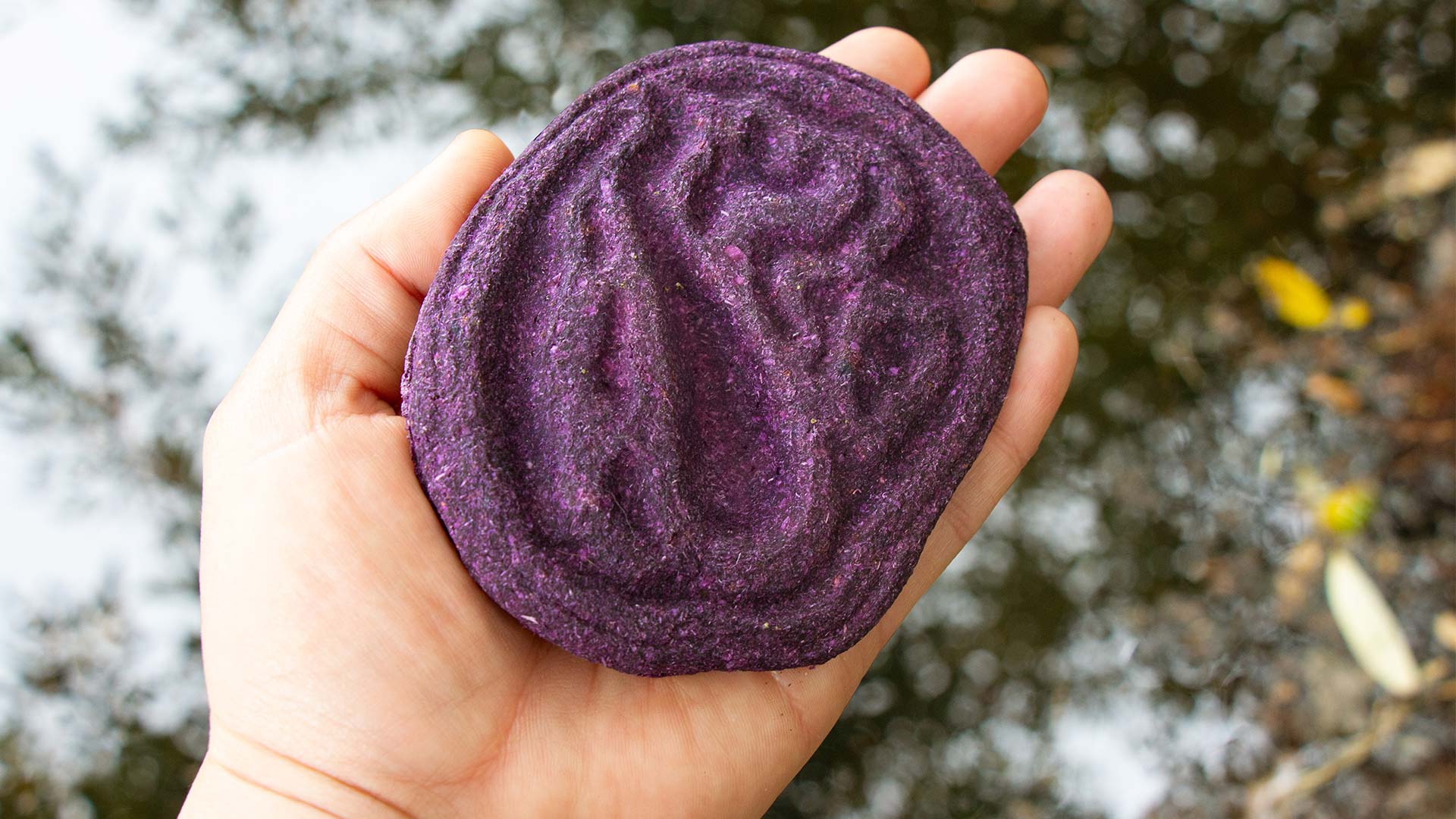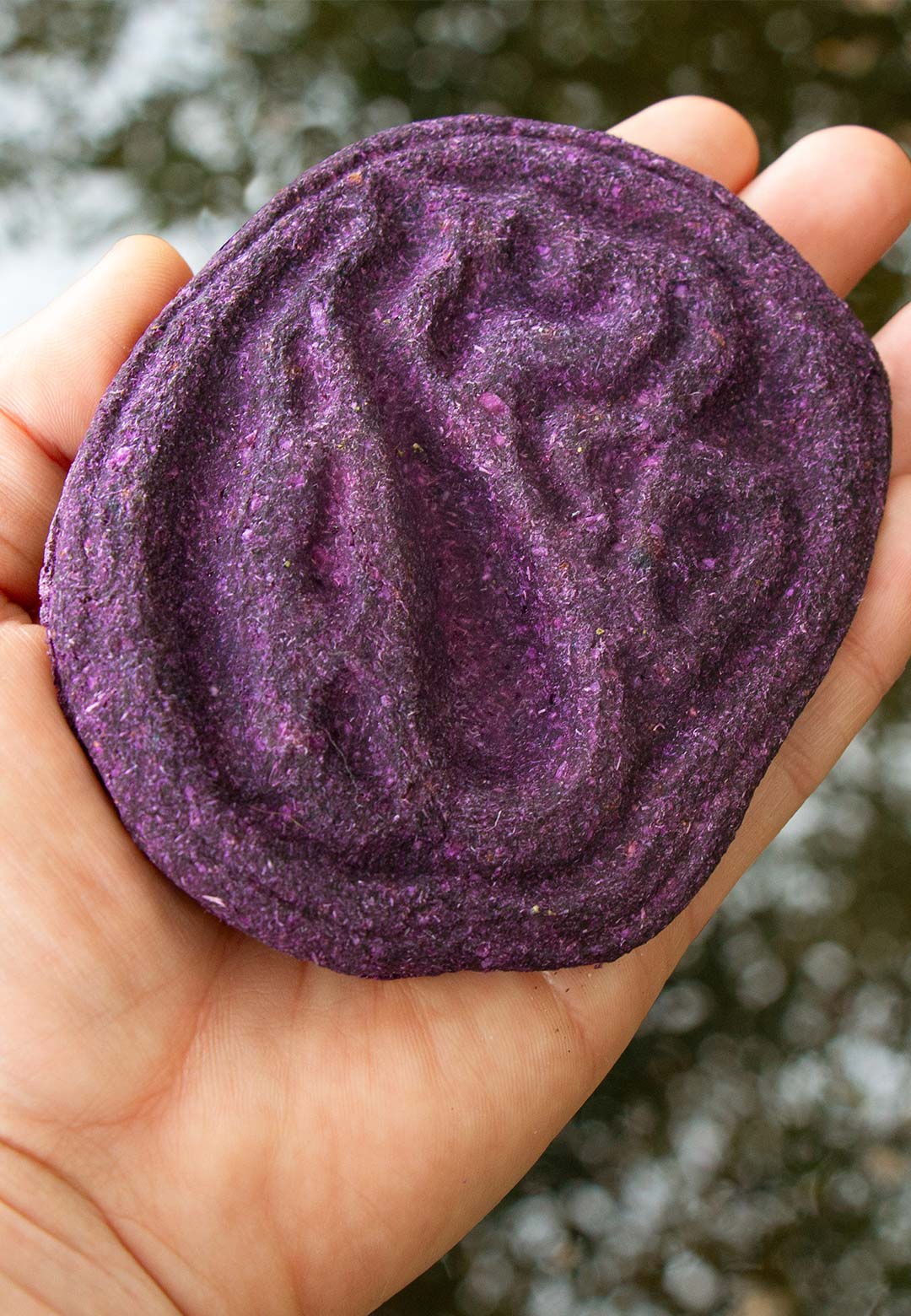Gathering local agricultural and food waste that would otherwise have ended up in landfills, Melissa Ortiz, an artist, educator, and community scientist from Salinas in California, USA, designed Colores del Rio. Named after a water body in the Salinas area, the title translates to ‘Colours from the River.’ Colores del Rio is a bioregional community engagement tool that helps in rating the pH level of the water it is dipped in. “It asks a California agriculture community in the Salinas area to look closer at the food systems they are acutely affected by and to show how local landfill-bound food waste can be a viable biomaterial. What we see today in Salinas is a pervasive mono-culture industry utilising synthetic fertilizers, pesticides, and herbicides that continue to harm people and ecosystems connected to waterways. Colores del Rio, a community engagement tool, is biodesign-activism in response to local systemic issues involving this monoculture industry, the Salinas River-watershed, and impacted communities,” shares Ortiz.
Made out of disposed red cabbage, this tool enables the youth in the area to discover the pH levels of the waterbodies in the vicinity, and hence, establish their level of contamination. In doing so, Ortiz intends to inspire and invite the younger generation to not only envision tools that utilise local food waste to experiment in the realms of biodesign, citizen science and environmental justice, but also develop an understanding of the source of contamination in the area. She hopes for this project to inspire a culture of sustainable design and innovation that is regenerative and that supports people and vicinal ecosystems equitably.
Ortiz, who grew up in the Salinas area, cites her earliest experiences (such as creating piñatas with her mother) as the inspiration behind her inclination towards design and arts. This led her to pursue a bachelor’s degree in Fine Arts from the University of California, Santa Barbara, and to seek a single-subject teaching credential from San Francisco State University. She, then, studied graphic design and animation at The Bay Area Video Coalition, UC Berkeley Extensions, and the Florence Institute of Design International. The American designer thence began a career in teaching at alternative high schools across the bay area and Salinas. Having witnessed the potential of learnings driven by curiosity and facilitated by play, she intends to utilise playful mediums of teaching and innovating as a designer. Ortiz, who is a board member at Xinampa (a community-based practice founded on a bioeconomy centered on racial and class equity that advances justice, democracy, liberty and freedom for the next generations), hopes to utilise these learnings to bridge the gap between her cultural background and the disciplines of design , art and science. The designer, who is currently pursuing an MFA in Industrial Design at the California College of the Arts in San Francisco, intends to drive this aforementioned change with Colores del Rio, a project that was announced as the recipient of the ‘Outstanding Social Critique’ award at Biodesign Challenge Summit 2023.
Colores del Rio was developed in a biodesign class at California College of the Arts (CCA), in collaboration with Xinampa and Mount Toro High School’s science department. On being asked what inspired her to begin the project, she shares, “As a high school arts educator in Salinas, I began to pay close attention to emerging research in biomaterials. I had the opportunity to work with students who eagerly engaged in extracting DNA from strawberries. It felt like science integration with art/design could become more possible with real-world applications. Additionally, I saw a need for Salinas youth to understand the environmental issues impacting them directly.” The designer understands the impact that the monoculture industries—present in the area for over half a century—have left in the California Central Valley. California, which is responsible for generating more than 70 percent of all vegetables in the US, practices monoculture, wherein synthetic fertilizers are injected into the soil to produce larger and faster yields. These pesticides seep into the local watershed. With an accumulation of nutrients, algal growth blooms, and this, in turn, restricts the flow of oxygen vital for living organisms and biodiversity. Ortiz has also witnessed her mother’s health decline due to exposure to these pesticides from her work picking strawberries in the 80s. Hence, with the intention of attracting the interests of the wider community in Salinas towards local issues and the potential for impactful work in this arena, Ortiz began this project.
At CCA, Ortiz took a class called ‘The Future of Biodesign,’ which was led by Professors Monica Martinez and Lauryn Menard, and which encouraged her to not only build Colores del Rio, but also understand the larger systemic impact of the monoculture industry. With an understanding of the resultant issues of the production of tons of agricultural waste as well as the impact on the local ecosystem and the people working in the agricultural industry, Ortiz intends to assist in designing a system that can integrate a circular economy that engages with and caters to the community. “Working closely with young people and their families in my hometown throughout the years has shown me that it isn’t one object or solution that will shift our world ecologically and systemically. It's an incremental collective system redesign that centers the knowledge and pace of those who are from the communities and are directly impacted by the systems at play. A consistent participation that takes time. First principles design isn’t quite it, but instead moving closer, engaging more deeply to better see where we have blind spots, and there are many,” she shares. She hopes that her project marks as an entry pint for educators, students and the community to engage in conversations about our environment and science.
Ortiz’s Colores del Rio is made by dehydrating red cabbage, grounding it into a powder and then mixing it with an adhesive substance to shape the final product. The product designer experimented and tested various recipes in order to develop one which would enable easy moulding of the cabbage particles into cohesive forms. “I also intended on making the material work like clay (Cole Clay) to be able to work with the material via a co-creation approach with a local high school science teacher and her class,” she shares.
Since red cabbage contains a water-soluble pigment called anthocyanin which changes colour when mixed with an acidic or basic substance, the final product design can easily change or retain its colour when dipped in water. Marking the source of inspiration for the project, Ortiz imprinted Colores del Rio with a motif that represents the Salinas River that runs next to her hometown. She signifies the essence of the river with a poem:
The Salinas River is special.
It nourishes an abundance of crops, culture, and community.
Like the Nile River, it flows north. An invisible river lies beneath in a deep water basin nourishing crops that feed the world.






 Sign in with email
Sign in with email










What do you think?